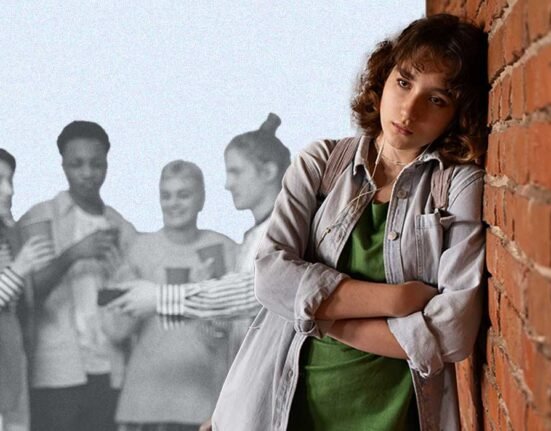Growing up as children, we yearned for independence, but as adults, we realize how challenging being a grown-up can be. It can be difficult dealing with the stresses of adult life, from meeting deadlines to paying bills. It may be tempting to run away from all these responsibilities and live like a child again. But we have to face the reality of adult responsibilities. A youngster who is exposed to a socially stimulating scenario acquires a deeper comprehension of the suggested behaviours, however not every child does.
In contrast to a normal individual who behaves radically, understands boundaries, and acts maturely. The behavioral standards of an immature individual would conflict with those accepted by society. A person with Peter Pan syndrome is characterised by their immaturity in social situations. Their disregard for obligations, and their juvenile behaviour. People frequently use terms like “A child trapped inside an adult’s body” to characterise this affliction.”.
They have a mind of a child- filled with nonchalant energy and no worries of responsibilities. It is important to note that Peter Pan syndrome is distinct from childlike obsessions and habits such as collecting toys, playing video games, etc. “It varies from simply being carefree or full of life. As it substantially impairs the person’s capacity to function in social, occupational, and work environments, resulting in serious quality of life deficits. In later life, they tend to hold on to youthful carefreeness and find emotional and financial responsibilities challenging.
The phrase “Peter Pan syndrome” originated from the well-known fictional character “Peter Pan.” It was created by Scottish author James Matthew Barrie. Barrie labels peter pan as “the Boy Who Wouldn’t Grow Up”. He is insouciant, full of life and often lands himself into troubles because of his carefree attitude. Despite Peter’s admirable and courageous nature. He remains disconnected from the world because he is averse to growing older and living the rat race. Due to his tendency to forget people and events easily, only caring about the next great adventure. He is irresponsible and lacks commitment.
The term first appeared in Dan Kiley’s book (1983), “Peter Pan Syndrome: Men Who Have Never Grown Up”. Kiley took inspiration from this fictional character “peter pan”. He describes it as a social psychological phenomenon prevalent among adult males. After working with troubled teenagers, Kiley found that many of them grew up to be adults. Who was struggling to cope with adult responsibilities. Despite being adults, they act childishly and lack emotional maturity. Later Kiley described a similar phenomenon in women known as “Wendy syndrome” based on the fictional character “Wendy darling”. Peter Pan syndrome is frequently blamed on women taking care of and nourishing their spouses.
In the current times, it’s still not considered as a prevalent psychological phenomenon due to the inadequacy of relevant research. The International Classification of Disease (ICD) does not list it as a mental disorder, nor does the Diagnostic and Statistical Manual of Mental Disorders (DSM-5). The world health organization doesn’t recognize it as a mental health condition. Males are said to suffer from it more often in Western countries, despite the fact. It can affect people of any gender, ethnicity, or location.
Symptoms and identification signs
Currently, it has not been recognized as a psychopathology. This means there is a lack of a basic layout on how the symptoms manifest. Some possible identification signs, based on the few relevant studies, include:
- Inability to make decisions for themselves: they often need assistance in making important decisions.
- Cannot handle daily chores and tasks: Frequently needs assistance with even basic life skills. It cannot handle daily chores and tasks like washing, cooking, etc. They are usually dependent on their family/partners to get things done for them. Perhaps their partner would have to remind them to brush their teeth, take a shower, or dress appropriately.
- Lack of commitment in work and relationships: Changes partners frequently and is unmotivated to do their job. They are often fired for taking frequent vacations or not being productive. They don’t express emotions in an appropriate way and are not committed to their partner.
- Incapacity to handle stressful situations: They Don’t Deal with Their Problems, Rather Prefer Running Away from Them. They lack healthy coping skills.
- Interest in personal development is minimal or nonexistent
- Spends recklessly: Personal finances are a mess because they unwisely spend money
- Lacks goals and long-term plans: they have a “you only live once” philosophy in life. They don’t have any future plans or long-term goals about work, relationships, or life. Focus only on present joys.
- Blaming others for their issues: they are immature and don’t own up to their mistakes and prefer blaming others.
- Unhealthy eating and drinking habits/substance abuse: They might smoke or drink heavily to run away from their issues instead of dealing with them.
- They are not reliable
- Make a lot of excuses to get out of difficult situations
Causes
Among the most significant factors implicated in the studies of Peter Pan syndrome are:
- Family environment and parenting style: Family is the closest contact an individual has with the outside world. An important factor in the emotional development of a child is the family dynamics and relationships with parents. Individuals who are given insufficient responsibilities when they are growing up and who strongly depend on their family members for even basic needs tend to be more vulnerable. In an overprotective environment, a child does not have enough room to explore. As a result, they tend to become fearful and limited and often turn to their parents for support. Two parenting style most implicated in research of peter pan syndrome are permissive and protective parenting styles. Permissive parenting is a form of parenting in which parents do not impose extreme demands on their children, and are also sensitive to the child’s emotional needs, so they do not set such health boundaries.
The parents tend to treat their children like friends, which leads them to always clinging to their parents when they are facing difficulties. An overprotective parent may view the world as cruel. So they want to shield their children from anything that might harm them. It is possible they may teach you to enjoy childhood and neglect to teach such skills as financial arrangements, housework, and simple repair skills as well as relationship maintenance. Oftentimes, overprotected children are incapable of thinking and reacting effectively in difficult situations. They turn into adults, which are immature and lack basic life skills.
- No adulting skills: If the child is not given enough responsibilities like doing their own homework, making their bed, basic house chores, managing pocket money they don’t develop the basic adulting skills. As adults they become insufficient in handling even basic responsibilities and lack emotional maturity. They don’t develop the basic coping skills and become insufficient in dealing with even minor problems.
- Predefined gender roles and cultural context: in various cultures, women are considered to be responsible for all household duties and responsibilities of the family. Their children are fed, cleaned, and cared for by them. This can make their counterparts believe less responsive to their actions and may always cling to their partners for their needs. In some cultures, people tend to live with their lifelong so observing as a child mother doing everything the male child might develop the idea of their predefined roles in the family. They may always look up to their mothers and later to romantic partners for emotional support. This is often referred to as enmeshment, when there are no health boundaries in a relationship, as a result of which the person is always dependent on that person. This process is often initiated from childhood itself.
- Childhood trauma: There are instances when people become “stuck” as a result of the trauma they have experienced. As a result of the difficult emotions that they experience, they may find it difficult to choose to move forward an individual who has experienced trauma and emotional turmoil during childhood which enabled them to enjoy their youth might make them want to give up all the responsibilities of adult life and live carelessly.
- Other mental health conditions: peter pan syndrome is often associated with personality disorders like borderline personality and narcissistic personality. Peter Pans may exhibit traits or features of narcissistic personality disorder, but they don’t typically meet the full criteria for the disorder.
Treatment
Although Peter Paners may not see the need to change something in their life, it can have a significant impact on their quality of life. So it is important to seek professional assistance Until drastic life changes like divorce or the death of the person they depend on, they might not realize they need help. As family members and partners, motivating them to seek help would be beneficial for everyone in the long run instead of accepting the condition as a personality trait.
It might be helpful for the person to work with a professional at some point during this process in order to better understand their behavior and work on changing it. A therapist might explore the life history of the person to understand better the origin of the condition and understand the pattern associated with it. Various types of therapies can be helpful in identifying these patterns like family therapy, solution-focus therapy, couple counseling, and much more. The therapist might work with the person and their family to make healthy life changes and learn some valuable skills. psychotherapeutic interventions can significantly help the person.













Leave feedback about this